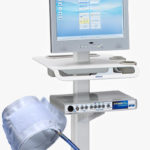Key Points: Physician practices must offer new services targeting quality treatment procedures and care delivery models. Evaluating and implementing new, successful business services is critical for sustainable profits.
Overview Today’s dynamic and complex heath care environment necessitates the urology practice adapt and change to prosper. Offering access to state-of-the art quality care and treatment models offers dual rewards – Ensuring the practice remains competitive and financially sustainable. Evaluating and implementing new care service lines for patients and providing community-based treatment procedures continues a successful pathway. Simply, providing quality care and services will drive increasing patient demand, reduce patient out-migration and assist with growing profitable market share. Future financial success dictates the practice grow to meet changing demands.
As you consider new technology in the practice, we encourage you to remember the urology practice is a complex ecosystem with many moving parts. Onboarding a new service line may initially appear an overall easy process. However, you will find it is more often not straight forward. As you consider new technology and procedures for your practice, we encourage a broad look at the practice impact in total. First and foremost, as a urology care giver you need to consider the clinical aspects of the technology. Support of the new technology from a clinical prospective will drive utilization. PRS is approaching this article from a financial prospective to provide you with an informational example of how to apply data to consideration of new technology. The article assumes the practice providers believe in the clinical relevance of the technology.
Once you are able to determine clinical relevance and support for the new technology, the analysis you provide will require you to consider a number of different factors. The length of this article will require that we leave some questions that each practice will need to consider in addition to the financial data you obtain. For example, will this be an additional service line for the practice? Will this increase patient demand or substitute or exchange treatment but not necessarily demand? Is it profitable or is the technology a break-even or loss that will lead to overall practice profits and good patient care? Implementing successful new practice services lines requires skilled leadership, a culture committed to change, staff capable of navigating the complexities of quality healthcare delivery and effective patient payments. All of the above factors are required.
Caveats:
Each practice situation is different. Successful business models are best customized to meet individual practice core needs, culture and care delivery infrastructure. Evaluating new service lines and technology requires effective due diligence and business case analysis. Accurate practice data can make a convincing argument and promote financial incentives for new business ventures.
I. Brief Action Plan Summary
Step 1. Define where the practice is today and where you need to be downstream.
Step 2. Align core practice data with robust analytics.
Step 3. Define actionable data and plans
Step 4. Develop effective top-down communications to support practice team buy-in.
This is arguably the most difficult. Successful communication is often more art than science.
Step 5. Align practice assets for future profitability.
Step 6. Re-engineer the practice to meet targeted goals and supporting objectives.
Step 7. Implementation.
Step 8. Review, monitor and adjust delivery model as needed. This is not a static business.
II. Evaluating New Lines of Business
Evaluating and implementing new lines of business is not easy. In today’s environment, new services must offer quality and value, yet be profitable. Yes, doing the math and extensive homework really does matter. Effective due diligence is required for defining value and overall impact on the practice. Also, remember, you are asking people to leave their comfort zone and commit operating capital.
Evaluating New Lines of Business

The above shows key points necessary for evaluating new lines of business. These represent a complicated set of relationships both tactical and strategic, so clearly show need, value, and upside.
Business Case Analysis UroCuff
For this article we will briefly review The UroCuff Test, which is a urinary function test for men that does not require insertion of a catheter. The product is targeted to provide data to differentiate treatment for men as recommended by the 2018 AUA BPH Surgical Management Guidelines. For this analysis we are using practice data from a large pool of Urology practices. We have used the data to develop the numbers for a Urology group of 8 Urologists and 2 APPs. We are using Medicare reimbursement rates without Geographic adjustment. Coverage and coding are discussed and based on experience with a majority of payers and Medicare carriers. As you apply these types of analyses to your practice you will have to determine and apply local payment rates and coverage as the apply to your practice. We have attempted to identify key assumptions. As a practice proceeds with a specific analysis, assumptions should be identified and if needed adjusted in the process of reviewing the technology. Once implemented all assumptions should be monitored and verified going forward. This not a static business and as you know healthcare is shifting rapidly and things will change. So, plan accordingly and continue monitoring the data used and understand adapting to change is essential for long term success. And finally, we are using 2019 Medicare data.
Assumptions
Opportunity – UroCuff Test measures bladder function during voiding and provides important insights to optimize BPH care.
ROI Assumptions – Stable market, Continued vendor support, Existing space, Room time 10 minutes, Staff training from Vendor. National Medicare reimbursement.
Technology – UroCuff System, variable purchased from Vendor.
Costs – Initial $10,995 (includes supplies for 50 tests) Variable cost $64 per patient. Pricing used is list price from Vendor.
Delivery Model – In-office. Similar foot print, room requirements and personnel as current Urodynamics.
Data Dive – Search data base for men with N40.1, R33.X, R35.0, R39.1X. 2744 Current Patients. 363 New patients 162 MIT procedures performed. Based on available patients currently in practice and analysis of potential treatment within BPH recommended pathway from Vendor an initial estimate of 2 procedures was targeted. Target based partially on current patient Urodynamics schedule and capacity to use the same room and personnel for the new test. Secondary consideration is provider support. Currently, 5 of 8 providers have indicated full support of technology and are driving adoption. This translates to 1 patient per doctor per work for the initial revenue stream.
Target market – Men with LUTS, BPH seeking treatment options. National Medicare
Competition – Two other smaller area Urology groups, neither using this technology
Financials/Production – Current OH for practice 65% excluding Drug costs. Production in two rooms and allow for service without change. Projected 10% Growth for year 1 and 2.
Staff – Scheduling, Admin, Collections. Procedure day, 1 staff member plus physician in-office.
Training –Provided by Vendor, no additional costs
Infrastructure – 2 Rooms available, minor changes needed. Will take time from existing patient load.
Scheduling – Specific to room and equipment. Patient volume will increase with marketing.
Referrals – Primarily in-house with potential increase with marketing from outside sources.
Bad Debt – 2%
ROI – Reimbursement per procedure based on experience from other practices and data provided by Vendor. Vendor sources were double checked with practices using the system within the same state with similar payer mix. When not available for same state, consider information from states with the same Medicare carrier and or neighboring states as starting point for validation and sources like PRS or other similar billing companies if available.
Note: no CPT code exists in current nomenclature for Voiding Pressure Study without CMG. Therefore, coding based on commonly used codes per vendor and PRS recommendation for codes 51728-52 or 53899 dependent upon payer for voiding pressure study. The AUA recommends 53899 for voiding pressure study. (Other articles are available for coding). Uroflow (51741) and EMG (51784) recommended by vendor, PRS and the AUA for service. Payment based on reimbursement, MCA for codes 51741 and 51784. Estimated reimbursement for 51728-52 (53899) based on vendor data and verified by PRS data analysis and reimbursement average across multiple payers and states.
Note: estimates used in similar situations should be based on realistic considerations if data is not available. We considered using 50% of the current MCA reimbursement for 51728 ($172.09), assuming Medicare CMG payment reduction based on published payment expectation by Medicare. This differential ($98.74) should be considered a worst-case scenario but calculated for group as a possible scenario. Worst case scenario is not presented here. But can be calculated with numbers provided.
Template for Quick UroCuff Procedure ROI Costs
Initial $ 10,995.00
Recurring $64.00
Reimbursement (MCA) $313.00 per procedure
51728-52 (53899) (estimated) $270.83
51784 $34.78
51741 $7.39
Procedures, $313 gross receipts per procedure
Proforma
| Month | Annual | 24 Months | |
|---|---|---|---|
| Volume | 20 | 220 | 462 |
| Payment | $6,260 | $68,860 | $144,606 |
| Disposables | $1,280 | $14,080 | $ 29,568 |
| Proc-ROI | $4,980 | $54,780 | $115,038 |
Analytics and Reviews
- ROI Assessment and Initial financial review indicates a positive margin. (Worst case Scenario is still procedure cash positive.) New equipment required to add the new service mix. Cost of equipment will need to be factored into overall analysis. This can be analyzed as either a simple direct expense with payout through projected utilization or amortized over a 3year period with inclusion of overhead percentage. Existing practice space can be used but projected to take away from current minimal services. Space use is currently near capacity but can accommodate increased procedure mix projection. Training for providers and staff required and will need to be scheduled prior to offering the service. Clinical training is available. Recommend site visit to clinic currently offering the service to observe office flow and treatment.
- Practice impact -Tactical and Two specific trained MAs in the procedure room location. These MA’s will be trained to assist 5 of the 8 physicians initially. Patients will be identified and scheduled for services in one location. All office personnel will need to be notified the service will require patients to travel to the selected office site for the procedure. Co-pays, prior authorization and co-insurance will be explained, as part of the practice financial policy, to the patient and a procedure deposit collected at time of scheduling and estimated cost per patient is obtained.
- New business line or exchanging for existing services? The service will be initially target existing patients with BPH as an alternative to testing and treatment As this is an alternative to current therapies/tests offered by the office, it is considered an exchange for existing services.
- Staffing support, delivery model, scheduling and team education A patient information sheet will be developed to include explanation of test as well as timing and request for arrival with full bladder. This informational packet will be provided to patients by the MA assisting the physician recommending the service. Patient pre-service visit discussion will be provided.
- Startup time Estimated 2 months until first test. Pending site visit to other groups, training, patient packet development and scheduling.
- Two months post initial service will review office and patient satisfaction with test. Marketing of procedure will begin with website announcement and patient testimonials. Additional marketing, if successful, will be considered for outreach with primary care and other advertising venues within 12 months of startup; pending results and reevaluation of service provision.
- Utilization, outcomes reviews and Outcomes to be measured by the AUA symptom score, patient reviews and follow-up Uroflow analysis where indicated. Based on outcomes, candidate qualifications will be refined and information discussed/provided within the practice. Other physicians will be provided with outcome results and consideration of expanded offering and new participants will be considered at 6-month intervals dependent upon utilization data. New patient referrals will be tracked by staff monitored questionnaire with regard to “how did you hear about us” implemented for all services last year. Additional identification of new patient visits with BPH diagnosis will be reviewed for change from past. As outcome of treatment with diagnostic equipment is secondary to treatment, the above collected data will be compared to data of those not receiving the test to determine if and how much the test helps differentiation of treatment and outcomes. Results of comparative study will be added to data for internal review, external contracting and marketing as appropriate.
- On-going Review and Strategies for performance Time for service and personnel required are to be reviewed monthly to determine if staffing levels and skills is accurate for service provision. Time in service will be measured and monitored for comparative improvement assessment and care plan adjustment. Collections will be monitored and payer updates provided to ensure proper payment. Success consideration: if procedure is successful and beneficial the practice should consider expansion of service first through acquisition of additional space or re-appropriation of existing space and patient flow. Second site service will require a second machine and new updated business plan.
Conclusion
Building an effective practice infrastructure and implementing new services requires leadership and a skilled team. For this business case analysis, we focused on the core financials with limited clinical issues. When considering new business services and committing practice capital in-depth due diligence is required including both financial and clinical key points. Understand that while the numbers may appear positive it only works if the procedure can be efficiently provided and accurate payment collected. We assumed the practice delivers quality care and has a choice in selecting new technology models. In closing, we understand the challenges and critical pressure points confronting today’s successful practice. We understand the stress and time constraints of evaluating and onboarding successful new business services. Our experience allows us to partner with the practice team. For more information or to discuss your practice please contact us.



